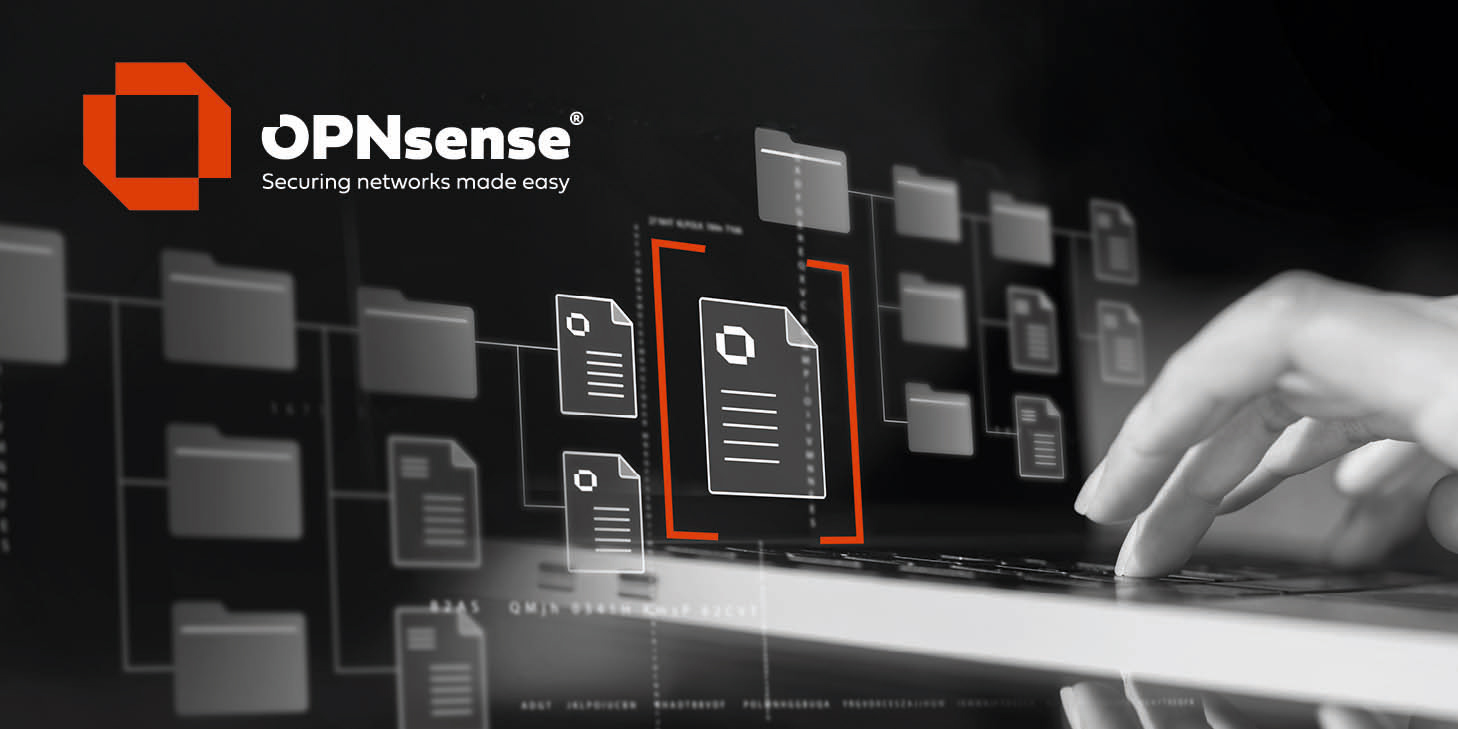Recent posts
#81
25.7, 25.10 Series / Re: NAXSI Archived
Last post by connervt - December 24, 2025, 12:58:48 PMQuote from: utahbmxer on December 24, 2025, 07:12:58 AMReally love the WAF
Had to look that up. The only thing that my mind came up with is "Wife Acceptance Factor". A very important metric in my home.
It is early. Time for some more coffee.
#82
25.7, 25.10 Series / Re: dnsmasq and ipv6 config
Last post by Patrick M. Hausen - December 24, 2025, 12:52:05 PMThe NDP proxy does that as far as I understand. The hosts think they are all in one single network. You can still firewall on each interface based on IP address.
#83
25.7, 25.10 Series / Re: dnsmasq and ipv6 config
Last post by muchacha_grande - December 24, 2025, 12:50:14 PMHi Monviech. I'd try ndp proxy, but how could I solve the IPv6 addresses assignment on the different VLANs? I have a single /64 IP on WAN and I need different networks with different /64 prefixes on each VLAN to be able to route between them.
#84
French - Français / Re: Redirections HTTP, HTTPS, ...
Last post by nuxbsd - December 24, 2025, 12:38:11 PMBonjour,
Merci pour votre réponse.
Voici ce que j'ai fait mais ça ne fonctionne toujours pas.
Je vérifie dans les logs du serveur FTP et rien n'arrive dessus.
En local ça fonctionne très bien.
Je ne comprend pas pourquoi ça ne fonctionne pas, là je suis vraiment perdu. :-/
You cannot view this attachment.You cannot view this attachment.
Merci pour votre réponse.
Voici ce que j'ai fait mais ça ne fonctionne toujours pas.
Je vérifie dans les logs du serveur FTP et rien n'arrive dessus.
En local ça fonctionne très bien.
Je ne comprend pas pourquoi ça ne fonctionne pas, là je suis vraiment perdu. :-/
You cannot view this attachment.You cannot view this attachment.
#85
25.7, 25.10 Series / Re: dnsmasq and ipv6 config
Last post by Monviech (Cedrik) - December 24, 2025, 12:34:48 PMWhy not give the ndp proxy a try its for this exact usecase and you dont need any other tricks.
No nat, no ulas, no unused guas...
No nat, no ulas, no unused guas...
#86
25.7, 25.10 Series / Re: dnsmasq and ipv6 config
Last post by muchacha_grande - December 24, 2025, 12:06:12 PMThank you Maurice. Before migrating to Dnsmask I will change all interface addresses to some presumably unused GUA /64. After testing that will go on with the migration.
#87
German - Deutsch / OPNsense mit nur einer IP auf ...
Last post by Melone145 - December 24, 2025, 11:46:56 AMHallo Freunde,
ich habe einen Proxmox host mir einer IP Addresse eine OPNsense laufen lassen jetzt habe ich nur das Problem das ich Problemlos nach draußen kommunizieren kann aber wenn ich von Internet komme wie mit einer VPN kommt dies lauft dem live tracker nicht bei der OPNsense an
ich habe einen Proxmox host mir einer IP Addresse eine OPNsense laufen lassen jetzt habe ich nur das Problem das ich Problemlos nach draußen kommunizieren kann aber wenn ich von Internet komme wie mit einer VPN kommt dies lauft dem live tracker nicht bei der OPNsense an
Code Select
auto lo
iface lo inet loopback
iface nic1 inet manual
auto vmbr0
iface vmbr0 inet static
address XXXX/XX
gateway XXXXXX
bridge-ports nic1
bridge-stp off
bridge-fd 0
bridge_maxwait 0
post-up echo 1 > /proc/sys/net/ipv4/ip_forward
post-up iptables -t nat -A PREROUTING -i vmbr0 -p tcp -m multiport ! --dport 22,8006 -j DNAT --to 10.0.10.2
post-up iptables -t nat -A PREROUTING -i vmbr0 -p udp -j DNAT --to 10.0.10.2
auto vmbr1
iface vmbr1 inet static
address 10.0.10.1/30
bridge-ports none
bridge-stp off
bridge-fd 0
post-up iptables -t nat -A POSTROUTING -s '10.0.10.0/30' -o vmbr0 -j MASQUERADE
post-down iptables -t nat -D POSTROUTING -s '10.0.10.0/30' -o vmbr0 -j MASQUERADE
#Firewall WAN
auto vmbr2
iface vmbr2 inet manual
bridge-ports none
bridge-stp off
bridge-fd 0
#Firewall LAN1 #88
General Discussion / Re: NAXSI
Last post by franco - December 24, 2025, 10:52:06 AM> Nonetheless... that person is a troll. Floodding the forum with bullshit bingo, which potentially harm others.
Yeah, trolling back is not a great plan.
Just report the thread(s) and we'll deal with it.
Cheers,
Franco
Yeah, trolling back is not a great plan.
Just report the thread(s) and we'll deal with it.
Cheers,
Franco
#89
25.7, 25.10 Series / Re: DNSmasq and Unbound Peacef...
Last post by Stormscape - December 24, 2025, 10:40:57 AMQuote from: DEC670airp414user on December 22, 2025, 06:20:19 PMscreen shot 3. i would turn off DNS within dnsmasq. change listen port to 0. you also do not need dnssec enabled if using quad 9Important caveat: You will NOT get name resolution for local DHCP clients if the dnsmasq DNS server is turned off, as Unbound will not read the dnsmasq DHCP client list automatically.
i use unbound and it works 100% reliable.
i setup dns over tls for quad 9 or similar products though.
#90
German - Deutsch / Re: Anbindung an die Telematik...
Last post by MichaM - December 24, 2025, 10:19:04 AMGuten Morgen,
die SMC-B ist bereits freigeschaltet. Ich tippe, dass der DNS-Response nicht funktioniert.
@RES217AIII Kannst du mir die Dokumentation zukommen lassen oder ist die irgendwo einsehbar?
@knebb beim stationären Konnektor ist das Sicherheitszertifikat ausgelaufen. Toll, dass das Ding 3,5 Jahre gelaufen ist. Bei Kosten >2T€. Jetzt ist die Anbindung an ein Telematik-Gateway erfolgt. Der Tunnel zum Konnektor steht, nur die weiteren Dienste (Kim+, KV-Safenet) funktionieren nicht. Karte einlesen etc. funktioniert problemlos.
die SMC-B ist bereits freigeschaltet. Ich tippe, dass der DNS-Response nicht funktioniert.
@RES217AIII Kannst du mir die Dokumentation zukommen lassen oder ist die irgendwo einsehbar?
@knebb beim stationären Konnektor ist das Sicherheitszertifikat ausgelaufen. Toll, dass das Ding 3,5 Jahre gelaufen ist. Bei Kosten >2T€. Jetzt ist die Anbindung an ein Telematik-Gateway erfolgt. Der Tunnel zum Konnektor steht, nur die weiteren Dienste (Kim+, KV-Safenet) funktionieren nicht. Karte einlesen etc. funktioniert problemlos.

 "
"
